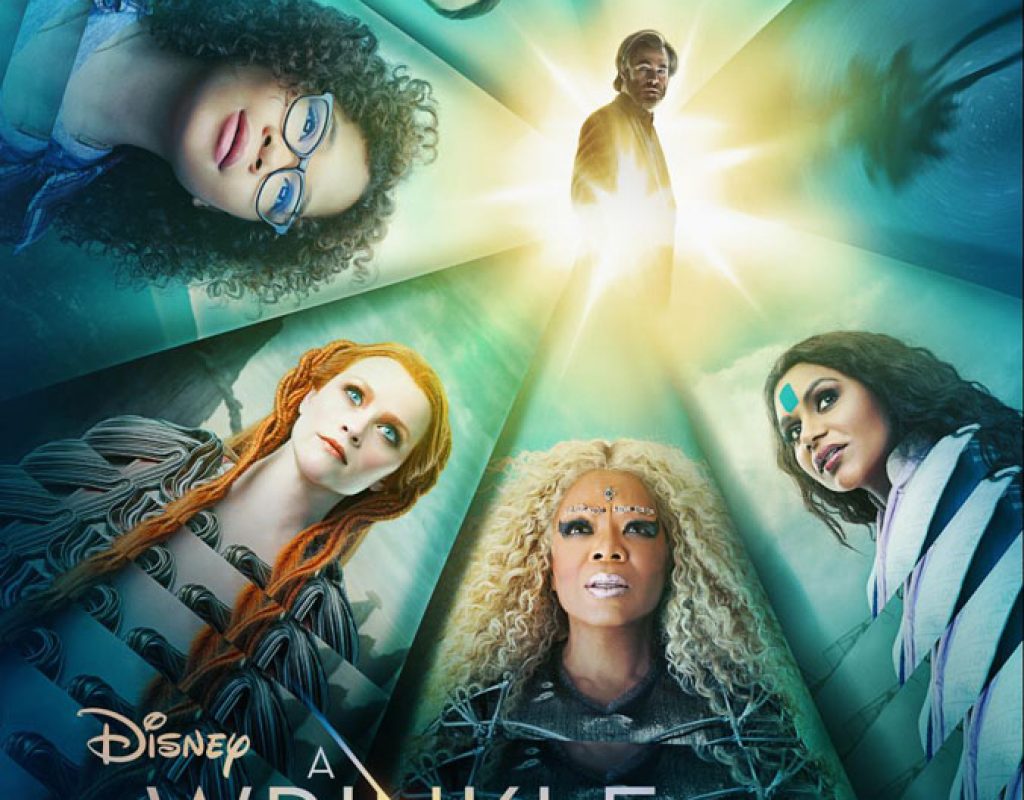Spencer Averick, ACE has a filmography going back over a decade. His work with his A Wrinkle in Time director, Ava DuVernay, goes back to their initial film project, the documentary, This is the Life. They have done numerous feature projects together including I Will Follow, Middle of Nowhere, Selma, and 13th. They also worked together on the TV series Queen Sugar. (So both of us have edited for Harpo Productions!)
(This interview was transcribed with SpeedScriber. Thanks to Martin Baker at Digital Heaven)
HULLFISH: Tell me about the beginning of your collaboration with Ava DuVernay.
AVERICK: I came down to LA wanting to be involved in filmmaking but not knowing exactly what I wanted to do. In addition to waiting tables, I started working small camera-gigs and editing a little bit when I could find a computer, mostly sketches and shorts for friends. I did whatever I could get my hands on. I got a gig shooting behind-the-scenes for an AFI short film, I met one of the producers on set who was also editing on the side. She was editing a documentary that needed another editor, that was Ava’s first feature-length project, This is the Life. Of course, I said, “Yea I’m an editor!” A few days later I met Ava and we hit it off, then she gave me a few trial scenes to cut before she hired me. It was really the first time I got to edit something that felt real you know, so I ate it up and had so much fun. She loved what I put together and we began on what was our first film together.
HULLFISH: I saw a bunch of documentaries in your filmography. How do you think that has helped you, that documentary experience in cutting dramatic stuff?
AVERICK: I find them to be similar in many ways. My doc experience probably helped with my narrative because they forced me to find the story before the fine-tuning part. We had to look at what we shot, then on paper figure out the best way to put it together and make it feel like a three-act movie with peaks and valleys, etc. This practice helped me understand more the beats and flow of a film. So I was a bit more prepared I guess when I got to cut my first narrative feature.
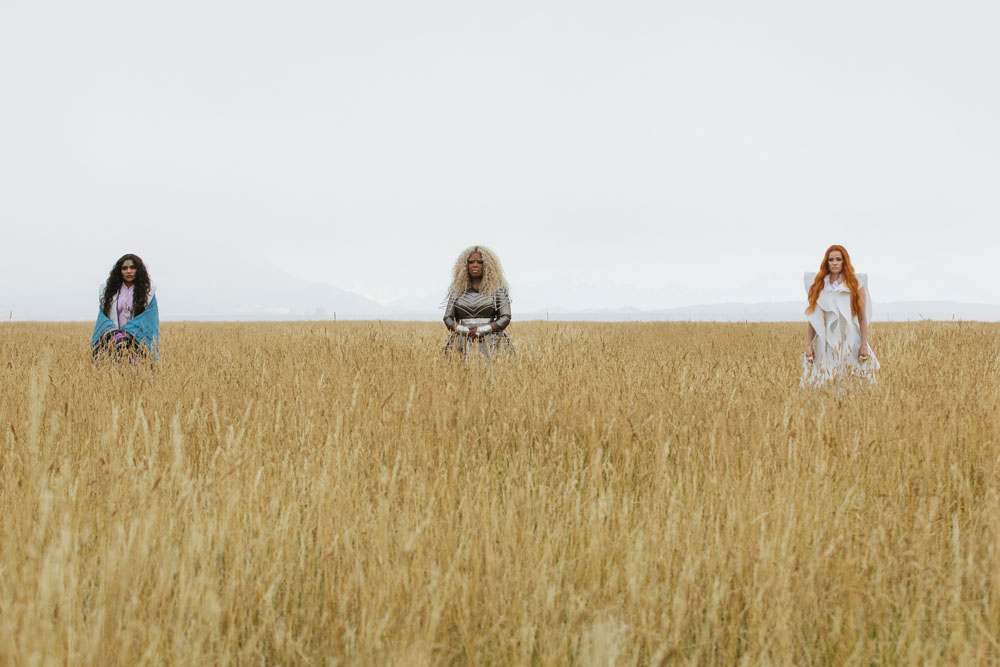
HULLFISH: It didn’t look like you really started as an assistant and learned the business and then moved into editing. I’m the same way. I was never an assistant, so it’s a learning curve when you hop into that first big edit, right?
AVERICK: Very much so. Maybe, mainly because I was so used to doing everything myself! Then when I worked with a real 1st assistant it was hard to let things go. My assistant would say, “dude, I can do the outputs it’s my job” (laughs). But yes the first big edit was intimidating but having the help was incredible. Luckily for me, I’d been working with Ava for some time so in many ways, it still felt like our “indie” experiences; making movies how we want to.
HULLFISH: To work on a film like A Wrinkle in Time, the assistant on a project like that is a whole other level of craziness.
AVERICK: I have so much respect for my assistant editors. They protect me, and the film. They’re in the trenches. So many little things they do that go unnoticed too. It’s a tough tough gig. My First AE on Wrinkle was Paul Alderman. He’s been working with us since Selma, a few years now. He’s great at what he does. And Ava gave him an episode to edit on the first season of Queen Sugar. He’s really earning it and working his way up, and I hope to see him as an editor soon. The rest of the team were incredible too – our 2nds Victoria Page, Mark Jones, and Yvonne Valdez.
HULLFISH: I saw some footage of you either cutting Selma or pretending to cut Selma and it looked like FCP7. Was that real? When did you switch to Avid?
AVERICK: Selma was definitely cut on Avid. Maybe it was footage from a feature before that, which was in Final Cut 7. I had used FCP for everything up until Selma. I was so comfortable with FCP but knew I needed to get a handle on the Avid if I wanted to take my career to another level. Once I cut a feature on Avid though I never looked back. Mainly because I love the timeline editing and trimming so much.
HULLFISH: How did you learn Avid?
AVERICK: I took a year-long class at Video Symphony in Burbank, which is closed now. Great experience. Taught the whole program, plus the post-production workflow in general which was invaluable.
HULLFISH: You should check out Master the Workflow — for yourself or for your assistant editors — I really highly recommend it. It’s to teach assistant editors all of the basic skills needed. Lawrence Jordan, the guy that started 2-pop, back in the day and who edited Lost City of Z and his assistant, Richard Sanchez are behind it. It’s really solid, and it includes Richard’s FileMaker Pro codebook database, which is worth the price of admission on its own.
What’s your process of watching dailies? Organizing?
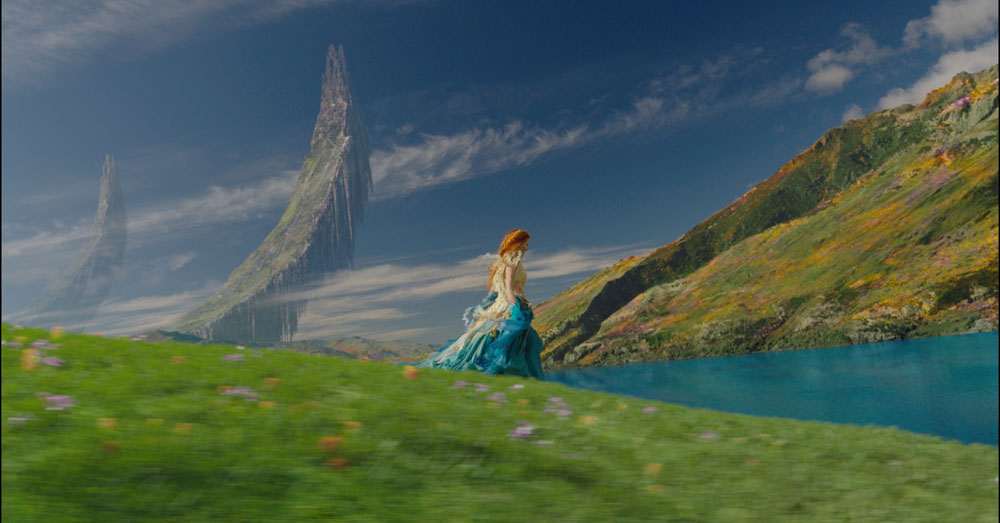
AVERICK: It’s evolved over the years. In the beginning, I kind of just did what I thought needed to be done, without really knowing how to do it. I continually update and tweak to try and make it more efficient. I find it so interesting to read your interviews and learn how other editors approach dailies and organizing.
My process has evolved basically into this – I try my best to watch all the dailies. The more I can view the better, time-permitting. While I watch I take mental and physical notes while running through possible ways to construct the scene in my head. I usually remember every little thing in the dailies. I think all editors have great memories when it comes to their footage. The assistants organize the clips in the bins in Frame View. Then they create what we call “scene breakdowns” – Sting-outs of all the takes for each line. So say the line is, “Nice to meet you”, I’ll have all eight takes of “Nice to meet you” back to back for easy comparing and selecting. Later down the line, it’s a quick way to audition alt takes for the director. Basically, breakdowns are like ScriptSync in the timeline, which for me works better than regular ScriptSync. It’s an invaluable tool to access for the life of the film. When I start cutting a scene, I’ll use both the Frame View clips in bins and these breakdowns to find the moments I initially want in the scene.
HULLFISH: I did something similar on my last movie.
Nice, love it. And when I’m drowning in dailies and need to be fast, I just start cutting the scene while I’m viewing dailies. Pick the line/moment that I feel and on to the next. Just going on instincts and feel. I still watch everything but I don’t wait until I’m done watching to start cutting. This is something I had never really done, but I found that the quicker you can rough together the structure of a scene, the quicker you can get to the finer-cutting and the more time you’ll be able to spend working the film as a whole.
HULLFISH: There’s nothing wrong with that. I just interviewed Joel Cox, who has been Clint Eastwood’s editor for 40 plus movies and won an Oscar for Unforgiven and I asked him about selects reels, and he basically said, “Selects reels are for sissies. Just find the take you want in the bin, mark an in and an out and cut it in.” So everybody’s got a different modus operandi.… way of doing things. He’s a Moviola guy. You find the shot. You make it the right length. You’re done. We’re moving on.
AVERICK: I love that. I love that idea. You need to try different ways and see what you might like. Keep different methods in your back pocket.
HULLFISH: Keep reading Art of the Cut and you’ll see a lot of new things to try.
AVERICK: In between projects — I think I’m like all editors — we just love what we do and constantly want to create and get better. I’ve been working crazy hours and I finally have a break, and I find myself looking at your interviews, reading books, watching movies, etc., etc.
HULLFISH: Every editor I’ve ever talked said: if you’re not learning, you’re dying.
So you kind of combine your dailies watching with your approach, and that’s what happens so often when I ask people about watching dailies, and the next thing you know they’re talking about editing already.
One of the things that struck me from the earlier interview that I was able to listen to of you was that you seem very passionate about finding and feeling that moment and watching the dailies and saying, “I got a lump in my throat” that moment has got to be in the film. Talk me a little way of finding those moments and how you end up incorporating them and sometimes maybe how you have to let them go.
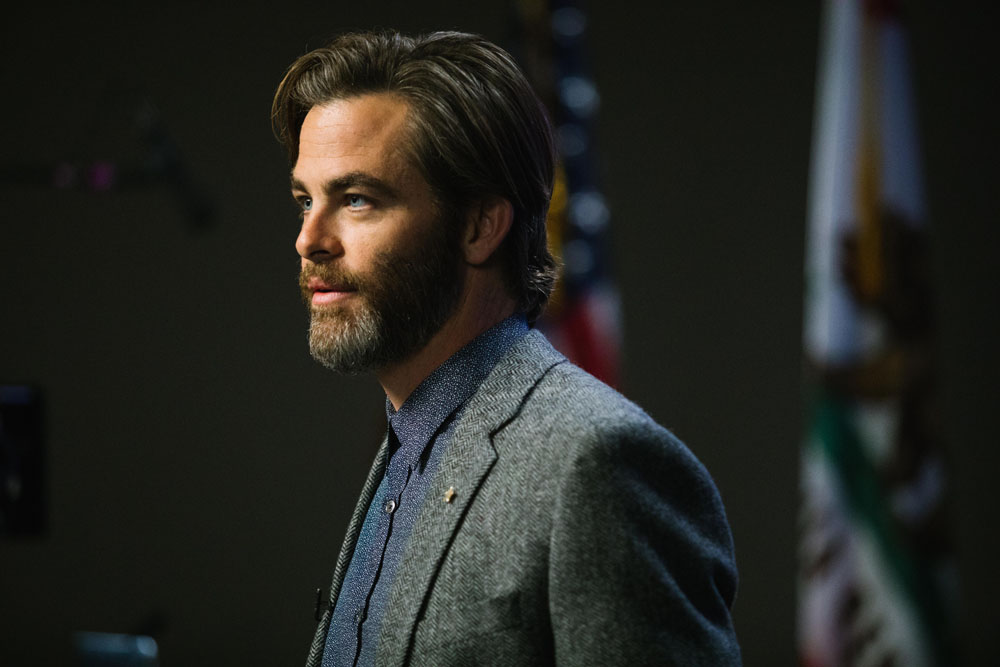
AVERICK: So much of it is intuition and who you are, and what you bring to the table, not so much technical. I really started to pay attention to how I feel and why exactly that shot made me feel a certain way, and how it might translate to an audience. So I try to be really in tune with that. If I respond to a moment in the dailies, I’ll drop it down into my sequence and incorporate as part of my first cut of a scene, even if it doesn’t make sense. If ANY part of the dailies makes me feel a certain way, I’ll incorporate into the first pass. No matter what. Then as you go through so many iterations of a scene, you might fall out of love with that moment and forget about it for a bit, but I always try to remember how it made me feel the first time because there’s a good chance you’ll want it back later.
HULLFISH: So you’re dropping it directly into a timeline during dailies viewing. I did an interview with somebody who said, you cannot watch dailies passively because it’s a waste of time. Other people have disagreed, saying that they let dailies wash over them without even making notes. I am kind of a locator person but maybe that’s just because of how long I’ve been on Avid.
AVERICK: I usually like to let the dailies wash over me, not only to absorb and remember but because I like to feel the progression of the shoot and what the director went through. But it’s also exciting to just start cutting. I’m not on one side or the other. And speaking of markers – I love that in Premiere — and I wish Avid would do this — You’re able to add a locator and a description while playing footage. You can make quick notes like “best take” or “ng” without always starting and stopping.
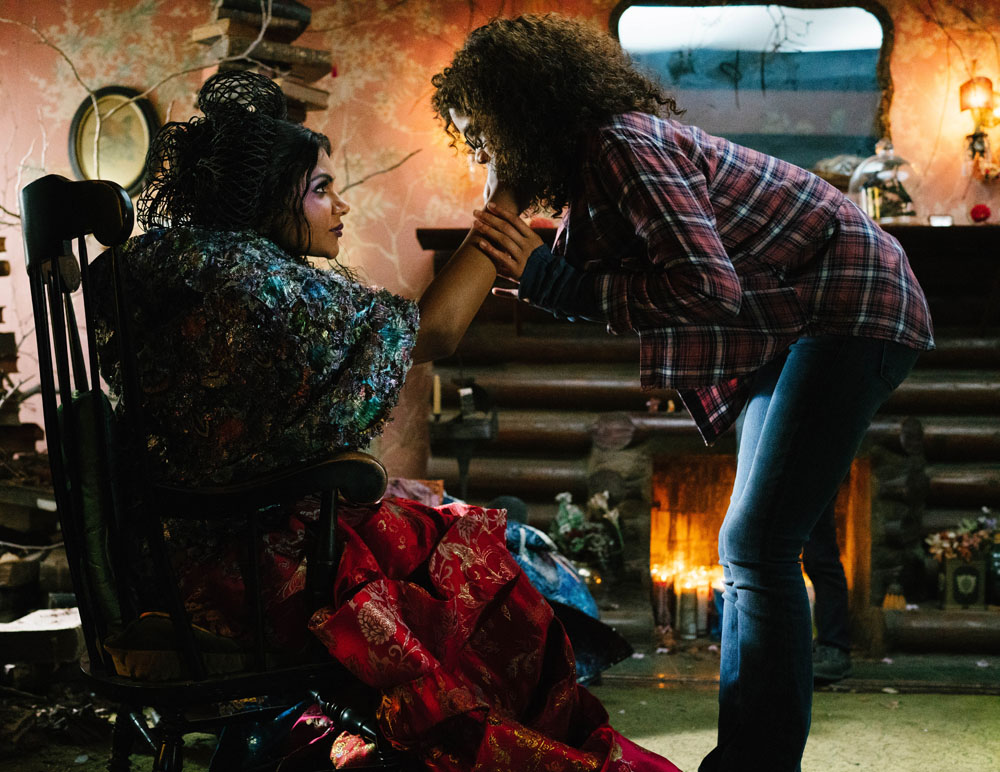
HULLFISH: Yep, I agree. Great point.
Can you tell me how long the editors cut was on A Wrinkle in Time?
AVERICK: I think it was three and a half hours.
HULLFISH: And what was the final?
AVERICK: Hour and 40 minutes.
HULLFISH:(stunned laughter)
AVERICK: A lot of cutting room floor material there.
HULLFISH: So talk to me about that process of cutting down, because even though you know it can’t stay at three and a half hours, those are great moments you cut in for a reason.
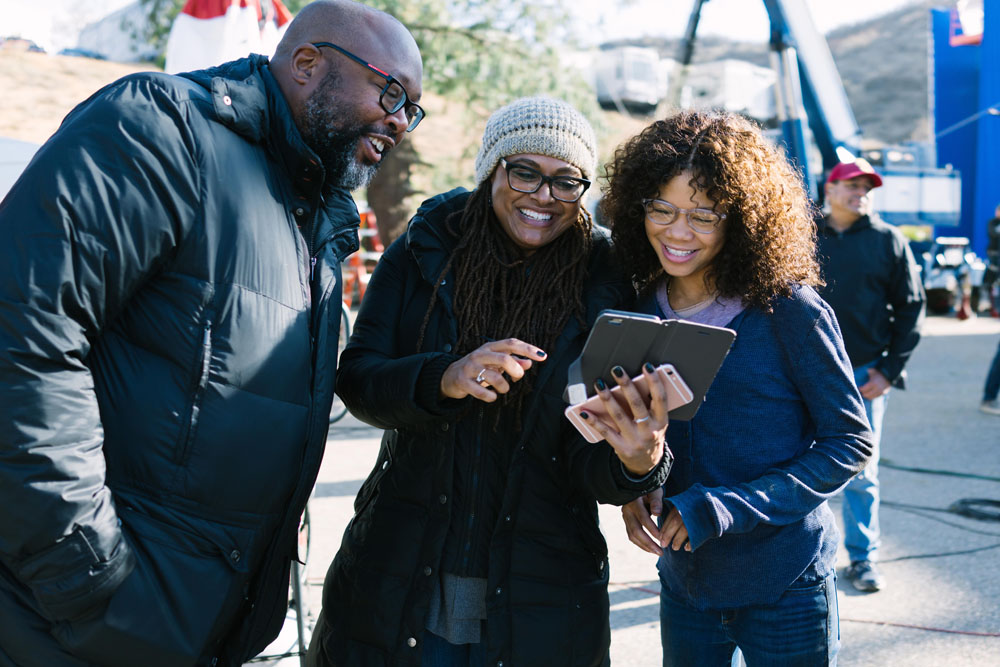
AVERICK: Yeah I know. It’s tough. Usually, the director hates the editor’s cut. They get depressed. But on this film the editor’s cut was well-received! So there were some very tough choices to make. You know for the first few months we mainly trimmed scenes down rather than wholesale cuts. As we got closer and the running-time became more and more of an issue, we started looking at scenes to cut. Then when you get close to picture lock date and you become less precious about things.
Sometimes you get into a scene and you realize, ‘OK they don’t need to say it because we see them doing it, or, we’re sort of saying this same thing in a different scene, repeated beats. And of course, you want to trim the ins and outs of scenes as much as possible. I think the director’s was around 2:20, so that was about an hour out. Some of these scenes we really loved, but they weren’t moving the narrative forward.
HULLFISH: So you still had to drop 40 minutes between the director’s first cut and final?
AVERICK: Yeah, it seemed impossible. How are we going to do this? I was always pushing for a long movie. What’s wrong with the two hour and 30 minute movie? C’mon! It’s an epic Disney adventure film! But obviously, that’s not realistic. We also needed to consider our under-15 audience and their attention spans.
HULLFISH: Tell me about those screenings: you become aware of things that you weren’t aware of when you cut them in the dark by yourself.
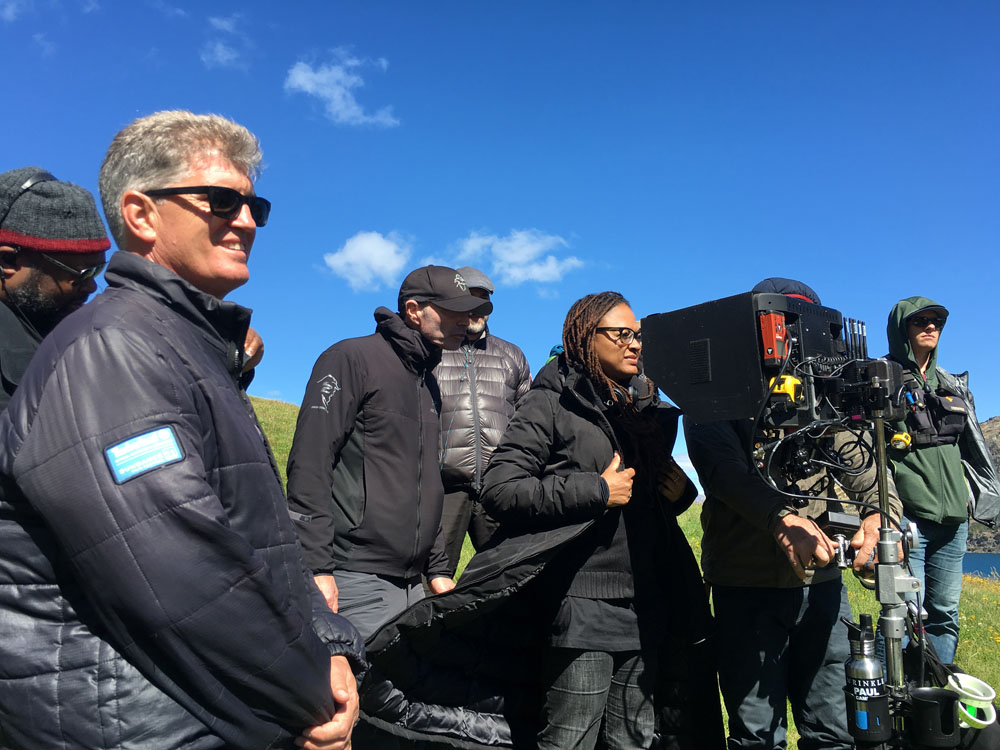
AVERICK: I remember our first feature we had maybe two or three test screenings and it was terrifying. It’s the worst and best part of the process because you know you’re not done, you know the film still needs work, but you need people to watch it at its current state so you can get the real, hard feedback and perspective.
And what you find is that watching it in front of people gives you an instant, fresh perspective. You sit there and go, “how could I have ever thought that was good?” as the moment lands dead in the room. You feel the flow of the film, what works and what doesn’t, what’s funny, etc. Then on top of that, you get a room full of new perspectives and thoughts on the cut. A necessary process that also helps you get thick skin.
HULLFISH: What was something you learned through the course of your career about editing?
AVERICK: I’ve learned so much over the past 10 years and love to continue to learn. I mean, a little thing I tell aspiring editors is knowing when to get in and out of a scene. This is crucial for the flow. Because in production they’ll shoot the actor walk into the room, do the scene, walk out of the room, for example. You want to find the perfect moment to get in, based on various factors, and that perfect moment to get out, emotionally and pacing-wise. When you get out of the scene early at the emotional apex of the scene, it feels so good. It’s that fine line that you’re balancing throughout the whole film. When and where to cut.
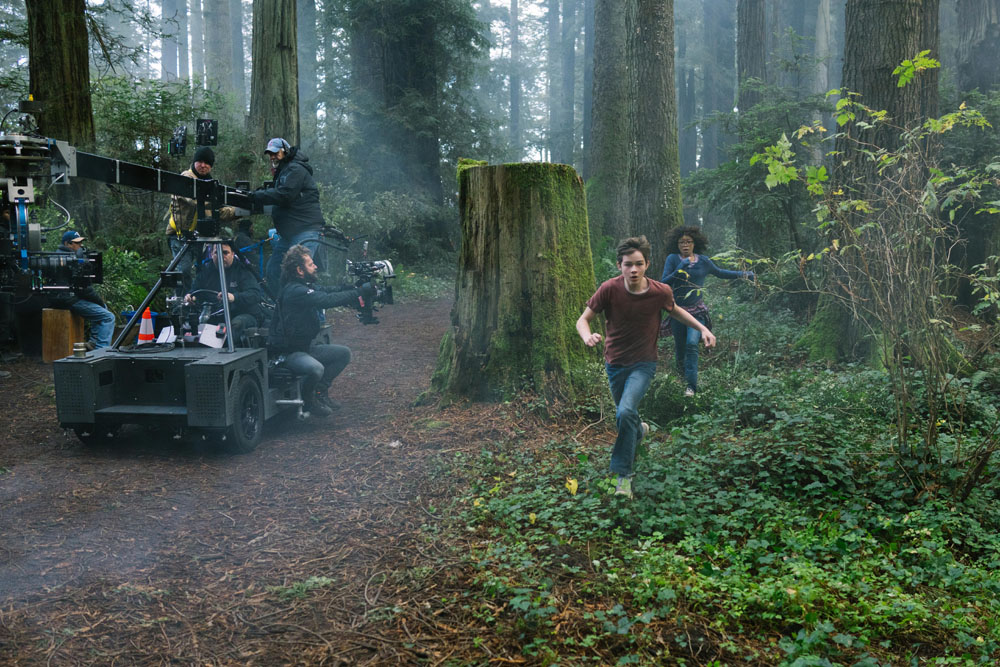
I remember we showed a cut of our first feature to an editor friend, we were examining a specific scene that felt really good to us, but she was like “Duh! Get out of the scene at THIS moment!”, which was obviously the emotional peak of the scene. We tried it and it propelled the story in a new, emotional and amazing way. Ava and I still talk about that moment when we’re stuck on a scene.
HULLFISH; Do you remember what that scene was?
AVERICK: It was a scene in I Will Follow. The main character was talking to her nephew about her deceased aunt. She said something poignant and emotional about the aunt, there was a pause and had a moment, then they continued to talk for another minute about more logistics-type stuff I think. And the following scene was a music-driven montage of the two characters packing up the house, preparing to move.
We cut right after the poignant dialogue and went straight into the montage. Pacing-wise felt perfect but more importantly, it left the audience with that wonderful feeling about the aunt as we shot into the next scene.
HULLFISH: That’s awesome. I love that story. Talk about temp music. Did you temp it before you got a music editor in? What did you temp with?
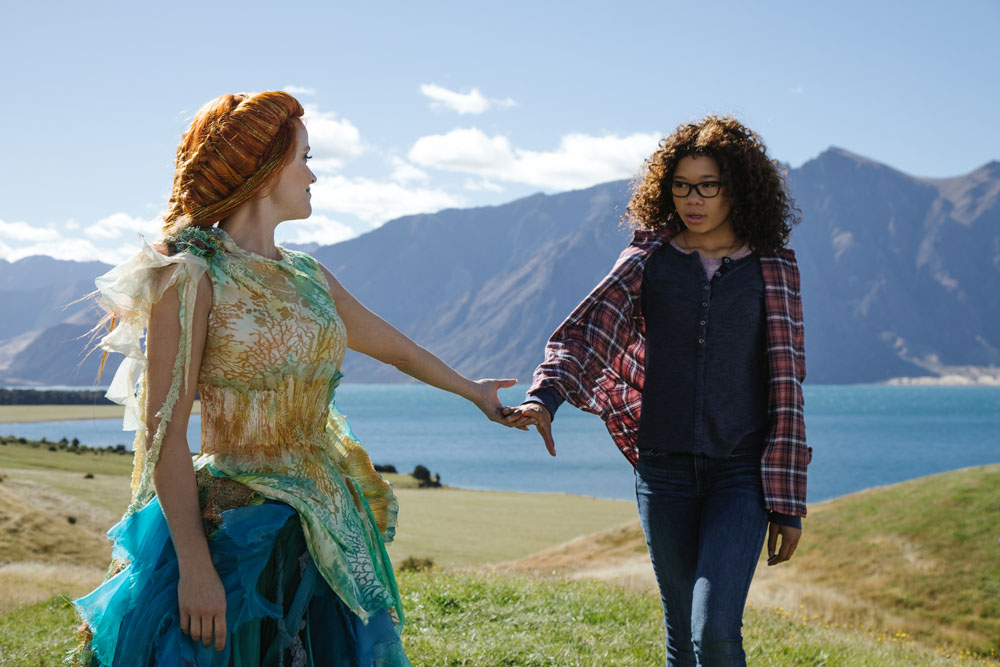
AVERICK: I started to add temp music during the editor’s cut, but quickly realized I was drowning in dailies and needed help, so we brought on our talented music editor, Julie Pierce, to create the temp soundtrack for the editor’s cut. She worked hard on that temp and it was amazing.
She would use multiple composers in any given cue, so I honestly can’t name all the composers we used. I know definitely Hans Zimmer and Johan Johansson were in there. Tons more. If there were awards for best temp soundtrack I think she would have won.
I’m sort of on the fence with temp. Ava likes to see the editor’s cut with temp music and I know we need it, especially on a film like this. On my editor’s cut, I like to cut for as long as possible without music. I like to get the scenes working as raw as possible. Temp did help though with some of the more VFX-driven scenes. I’d have this massive blue screen scene where the environment will eventually set the tone, but for now, I need some temporary tone-setting music! I’ll pick a score that to me represents how the scene might feel when the VFX is filled in.
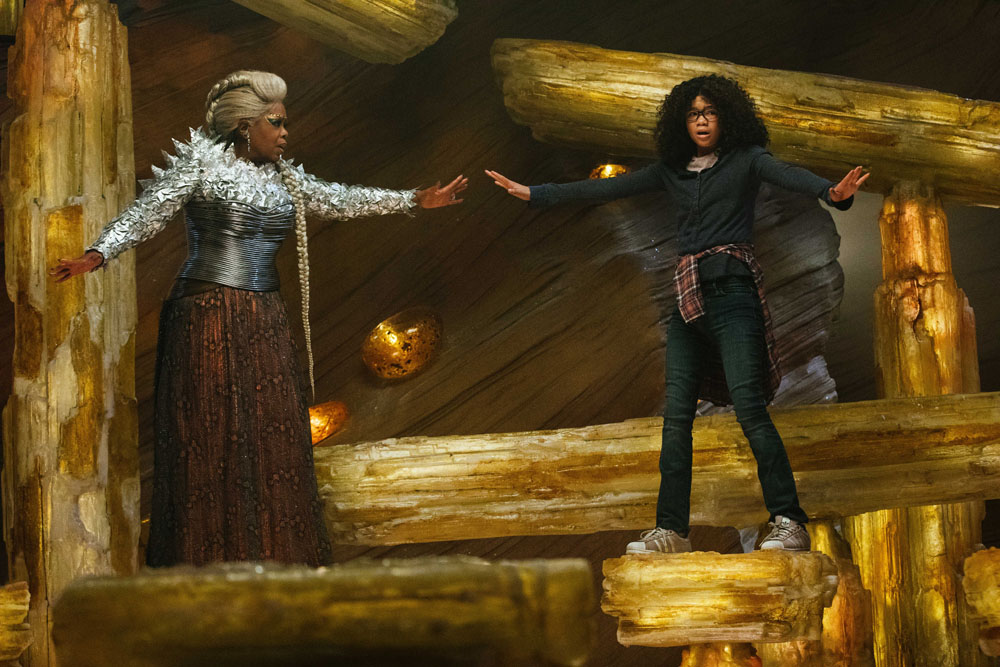
I’m also afraid of getting married to the temp, then you’re sort of asking the composer to find that specific feel instead of creating their own. But that’s rare I’m finding. At this level, Composers know how to deal with temp and don’t let it get in the way. On this movie, our composer, Ramin Djwadi, came in and immediately wrote beautiful new music that made us forget about all about the temp.
HULLFISH: Tell me how your assistants set up your bins.
AVERICK: I mainly use Frame View, thumbnails of each take from each camera. I’m sort of rethinking how I’m going to work next time. When I started on Final Cut Pro 7, I used the default text view with specific descriptions about what the shot is, that always felt good. Sometimes a Text View like this is more efficient in finding a take than Frame View, which can become cluttered and unwieldy when you have multiple camera angles and multi groups. So I like to use a combination of Frame and Text views. Like I said I update my process a little bit before each project. I love that. Always learning, always getting better.
HULLFISH; Check out the interview with Eddie Hamilton’s assistant editors on Kingsman: The Golden Circle. They show specifically how they set up the bins for him and they do a really interesting thing with multi-cam and there’s a screenshot of their technique.
Talk to me about that relationship with Ava. And how is it different when you go work with somebody else that you haven’t worked with as long?
AVERICK: Honestly, it’s been a while since I’ve worked with anyone else. But it is different. Ava and I hit it off immediately. We share the same sensibilities. We like the same things and laugh at the same things. When I’m watching dailies and I get a certain feeling about a moment, I can say confidently to myself whether or not Ava will feel the same. Not always of course, but I’m pretty close. And so we sort of have a short-hand and that’s great because we spend more time working and less time explaining to each other. It’s also a whole lot of fun to work and create with your friend.
HULLFISH: You had some help with this film, how did that collaboration go with that other editor?
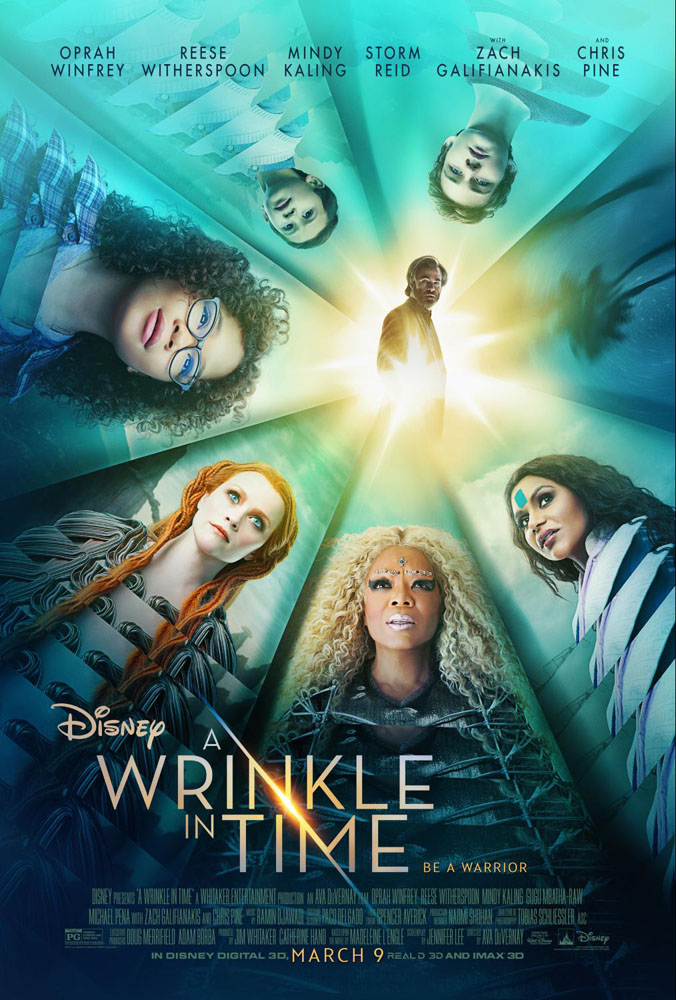 AVERICK: Yes, in order to meet our Director’s Cut deadline I needed a little help. We called our friend and editor Teri Shropshire to help for a month or two. She’s an established editor with a great eye. It was all-around a wonderful experience. Not only was it a huge weight lifted off my back to have a hand, but we’d dig in and talk about scenes and arcs and characters, bounce ideas off each other. Now I know why there are so many two-editor teams out there, especially with movies this size.
AVERICK: Yes, in order to meet our Director’s Cut deadline I needed a little help. We called our friend and editor Teri Shropshire to help for a month or two. She’s an established editor with a great eye. It was all-around a wonderful experience. Not only was it a huge weight lifted off my back to have a hand, but we’d dig in and talk about scenes and arcs and characters, bounce ideas off each other. Now I know why there are so many two-editor teams out there, especially with movies this size.
HULLFISH: I usually ask this question first, but tell me about the schedule.
AVERICK: This was by far my longest post schedule. I’m trying to remember, I could be off but I think we started in October of 2016. I think they shot about four months. Production wrapped around February. Then, basically we had about a year to cut. I finished cutting in January 2018.
We had all these deadlines along the way though, so it never felt like, “Oh great, we have a full year!” We always had something due in four or five weeks or something, plus it’s a lot of back and forth with the VFX team. It was a beast, but a great experience and one that I’ll treasure. I’m extremely grateful and proud.
HULLFISH: Thank you so much for your time. Spencer, it was fantastic talking to you.
AVERICK: You’re welcome, Steve. Thank you. And I look forward to reading more of these wonderful interviews.
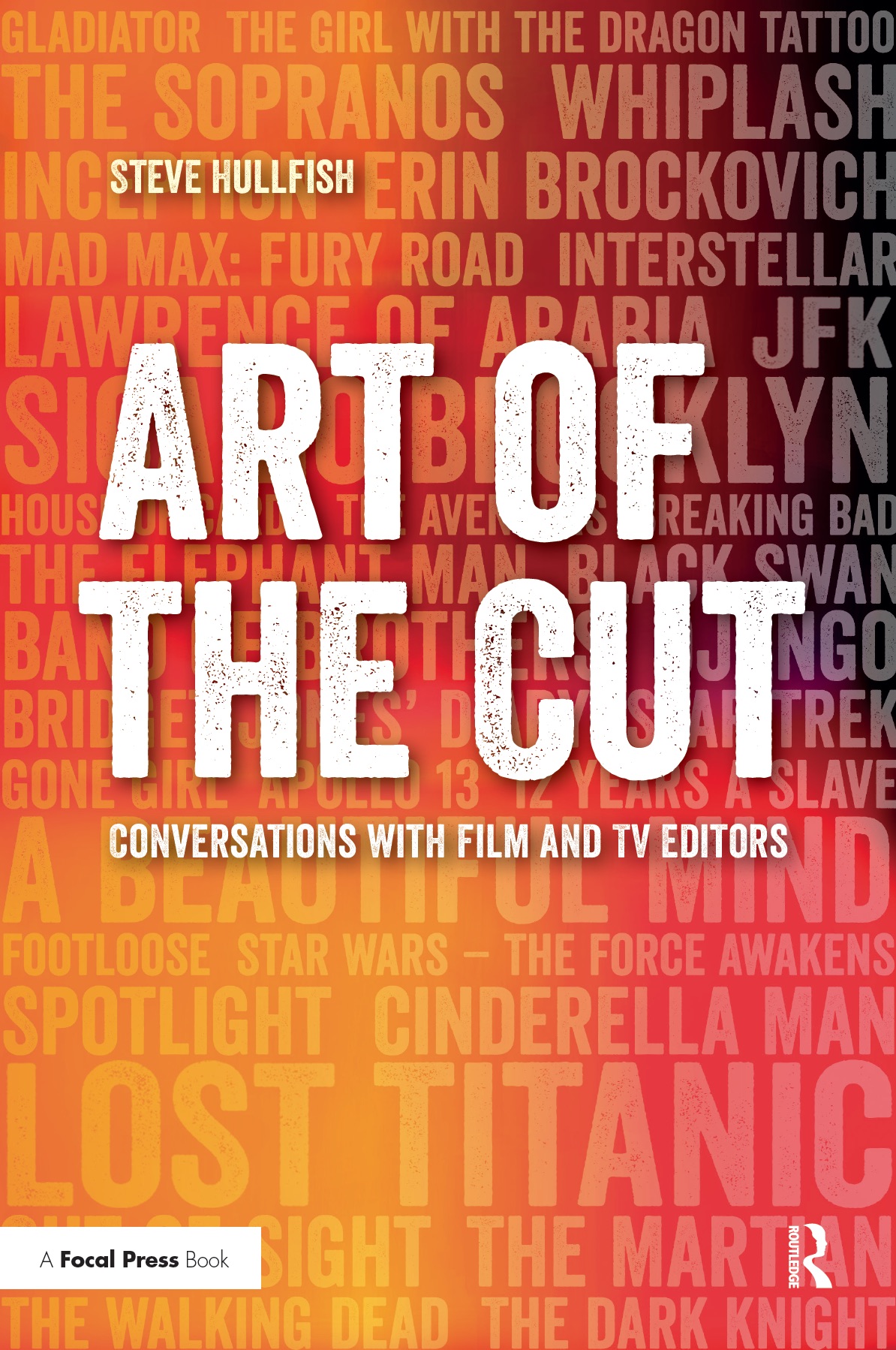 To read more interviews in the Art of the Cut series, check out THIS LINK and follow me on Twitter @stevehullfish
To read more interviews in the Art of the Cut series, check out THIS LINK and follow me on Twitter @stevehullfish
The first 50 interviews in the series provided the material for the book, “Art of the Cut: Conversations with Film and TV Editors.” This is a unique book that breaks down interviews with many of the world’s best editors and organizes it into a virtual roundtable discussion centering on the topics editors care about. It is a powerful tool for experienced and aspiring editors alike. Cinemontage and CinemaEditor magazine both gave it rave reviews. No other book provides the breadth of opinion and experience. Combined, the editors featured in the book have edited for over 1,000 years on many of the most iconic, critically acclaimed and biggest box office hits in the history of cinema.

Filmtools
Filmmakers go-to destination for pre-production, production & post production equipment!
Shop Now